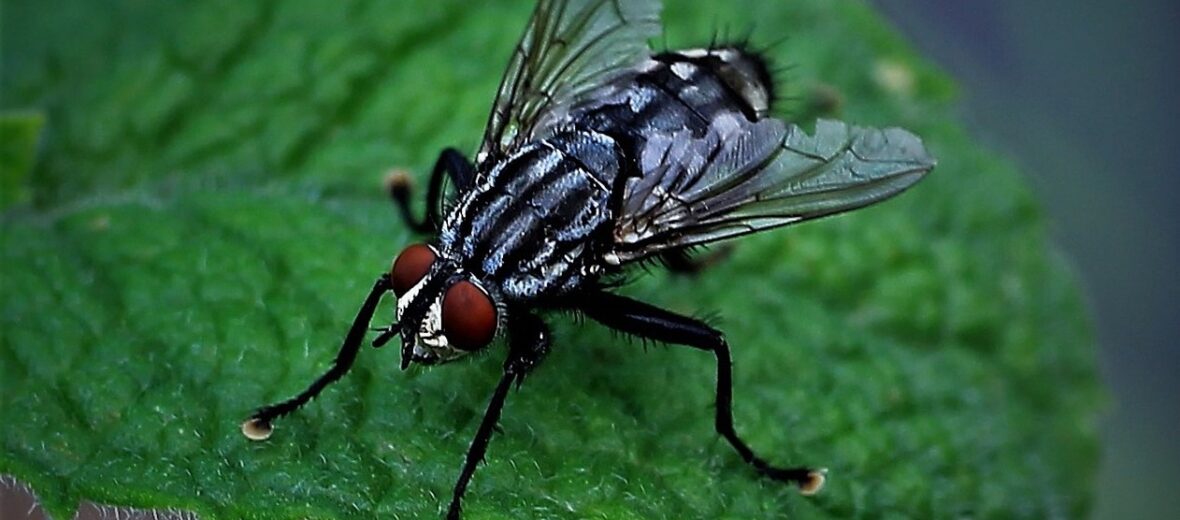
Oops! Left the door open again and here comes the housefly. Typically not 1 but many. These creatures have been around for about 65 million years. They aren’t going anywhere any time soon. As long as there are animals and humans around. Yet, as annoying as they are, they are actually beneficial, in many circumstances. This is because they are a primary decomposer of carrion (dead animals). However, they also carry disease, as a result of their diet and lifestyle. They are found on every continent in the world, sans Antarctica.
First the Stats…
Scientific name: Musca domestica
Length: .27 inch
Lifespan: Up to 6 days
Now on to the Facts!
1.) Unlike many other insects, houseflies have only one pair of membranous wings. The second pair of wings are small and resemble a pair of tiny drumsticks. This pair of wings are called “halters” and are used for balancing during flight.
2.) The housefly is what is known as a synanthropic organism in that they benefit from their association with humans and animals.
3.) “Hey. Chew your food!” Houseflies regurgitate (vomit) digestive juices onto solid foods which break down the food into an oatmeal-like substance, allowing them to use their proboscis (tube-like apparatus used for eating) to drink their meal.
4.) Flies have chemonsensilla (taste receptors) located on their feet that they use to taste the food they are about to consume. Butterflies also have this cool feature.
5.) Like butterflies, the housefly also has compound eyes. They have up to 4,000 lenses in each eye that allow them to see the world around them. Although not that well.
But wait, there’s more on the housefly!
6.) Aside from tasting with their feet, they smell with their antennae.
7.) Houseflies are known carriers of numerous pathogenic bacteria. Dysentery, gangrene, tuberculosis, anthrax, plague, cholera, dysentery, leprosy, giardiasis, typhoid, conjunctivitis, salmonella, and more! So, if they land on your sandwich, it’s best to just throw it out.
Did you know…?
A house fly’s wings can beat up to 1,000 times per minute! Despite this fact, they can only fly up to 4.5 mph.
8.) They poop a lot! A housefly defecates every time it lands on a surface and several times after that, if left alone.
9.) Each of the fly’s feet has a a tarsal claw with a sticky pad. These allow them to hang onto any surface, even windows. As you’ve no doubt seen.
10.) Females lay up to 120 eggs at a time and they do so frequently. If left to their own devices and unchecked, plus mortality aside, in just a 5 month period a single female could produce 191,010,000,000,000,000,000 flies! Thank goodness for predation and a short lifespan. That’s a lot of maggots!
Now a Short Housefly Video!
Also, check out the Critter Science YouTube channel. Videos added frequently!
Want to suggest a critter for me to write about? Let me know here.



